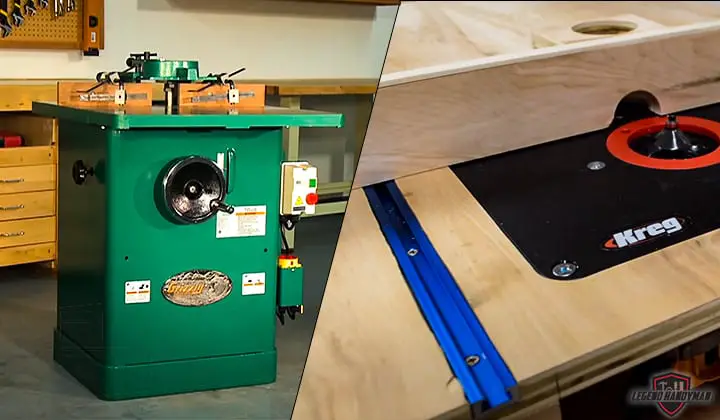Managing the space in the workshop is one of the toughest challenges that a worker can face. As your workload gets increased, you begin to see your tools tumbling all over your garage. So, any addition to that tool family takes some thinking and considerations. Most of the time, considering space, time and money, routers become the first choice leaving the shapers out.

That’s understandable and makes a lot of sense in many ways. However, there are smarter ways to do that. The routers when inverted can do many things that a shaper can and the shapers are irreplaceable due to a lot of reasons too. But the routers are far superior in some specific tasks that you can’t think of doing with a shaper. So, what would you choose for your workshop and why?
Why Routers are Superior
The benefits that a router offer over a wood shaper are several. Let’s look at some of the significant ones:
Cost
The cost is a significant factor while choosing between a router and a shaper. Now the shaper and the router, both have a wide range of prices depending on the quality they offer, shapes and sizes they have. As the price goes up, the quality improves and vice versa.
Leaving the complexities aside, let’s compare a standard router for a specific work. For the same job, the router that you will need will cost you far less than a shaper for similar work. If we compare numerically, a router around 350 dollars will serve you the same as a shaper of around 800 dollars. So, routers are indeed superior in terms of price.
Versatility
The possibilities with a router are a lot. You can use a router bit for different applications that you can’t do with a shaper. Also, the router bits are easily replaceable for different types of cuts which is pretty troublesome in case of shapers. The routers are easily packed and transferred which is another advantage over the shapers.
Tooling
The router bits are smaller compared to the shapers. This allows you to make more precise cuts and provides more control over what you are doing. Being small in size enables the bits to have higher rpm which is indeed very useful for cleaner and superior cuts.
Why Shapers are Preferred
The shapers, however, have some distinct features that the router bits don’t. Let’s point some out.
Adaptability
You can use almost every router bit on shapers, but not the other way around. You heard it right. With suitable adapters, you can use router bits in your shaper and say sayonara to your routers.
Tooling
Shapers are somewhat identical to the routers but they offer much more power than the routers. The high power makes more complicated profile cutting than the low power ones. The good thing about it is you need only one pass to create a complicated profile. A router would require at least three passes for the same task. Shaper cutters are preferred for wide profiles like crown moldings and raised panels.
Reverse
Sometimes, as it happens with woodworking, the wood that you are working on gets split due to the grain direction. But a shaper can run in reverse and solve this issue with ease. However, you won’t find this useful feature in any router on the market.
Saving time
We already discussed the cost-effectiveness of the routers. However, which we didn’t consider back then that a router needs three or more passes to make something which can be done with a shaper with just one pass. This saves a lot of time and definitely boosts your productivity.
Heavy Machining
For heavy works, for large amounts of orders, the shaper is the perfect option, not the routers. Of course, routers are versatile, but they are designed only for light-duty jobs. Remember one thing, always make the tools do the work, not your hand. Instead of pushing a router to its limits when it comes to heavy-duty work, get a shaper as it’s safer and produces results much faster.
Noise
Despite being bulky in size, shapers are surprisingly much quieter than routers. However, the shapers do have more vibrations than the routers which are quite understandable as they are less sturdy and they have a belt that has low rpm.
Conclusion
Here comes the most difficult part, choosing what’s best for you. The tip would be, if you are new to carpentry, buy a router first instead of the shaper. They are easy and they have different bits to help you with. Do some projects and master the routers bit by bit and you will know when to upgrade.
And then the time will come to upgrade to shapers. By this time, you will have all the router bits that you can easily use in your new shaper. All you have to do now is to buy an adapter and you are good to go.
Happy carpentry!
I'm Joost Nusselder, the founder of Tools Doctor, content marketer, and dad. I love trying out new equipment, and together with my team I've been creating in-depth blog articles since 2016 to help loyal readers with tools & crafting tips.
